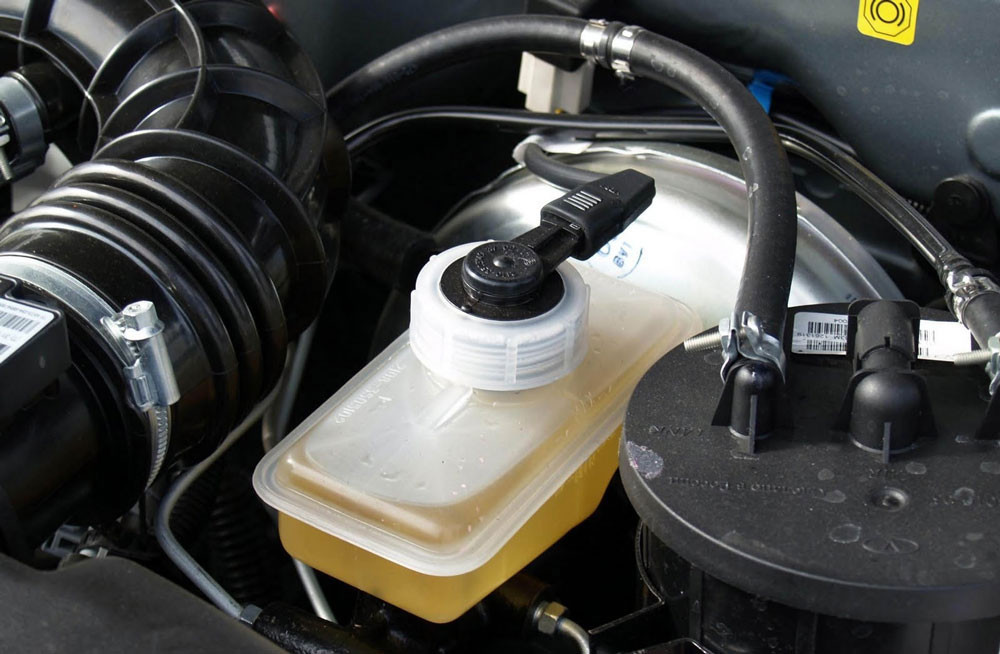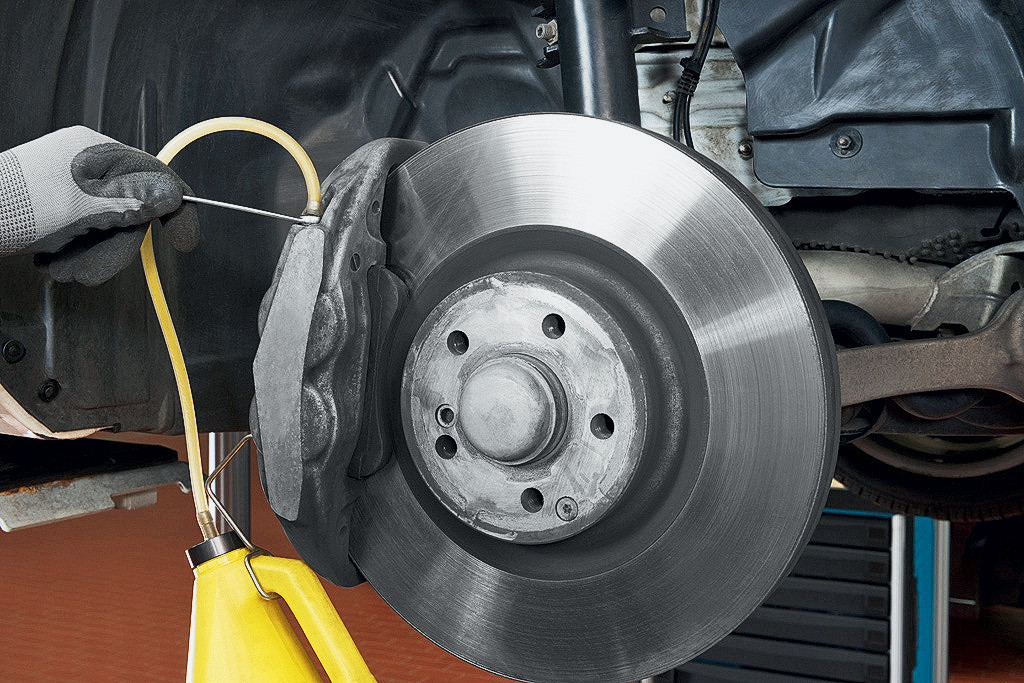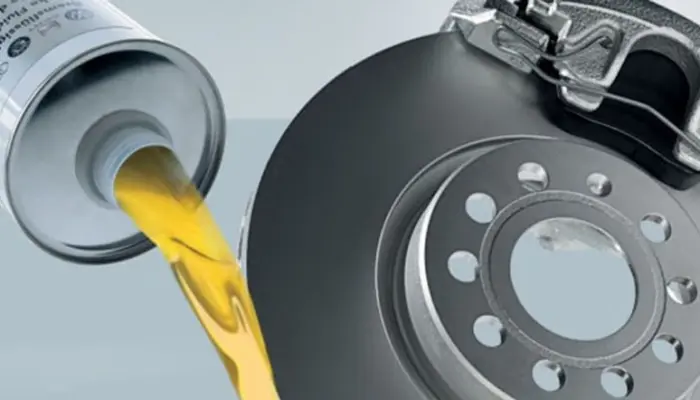Brake fluid is a critically important working fluid for safe operation of the car's brake system. Over time, it oxidizes and absorbs moisture from the air, which leads to a decrease in its quality and effectiveness. Using old or poor-quality brake fluid can cause deterioration in braking, corrosion of internal components of the brake system, and even complete brake failure.
Signs that Brake Fluid Needs Replacement

By timely replacing the brake fluid, you extend the life of the brake system and ensure safety on the road. Here are the main symptoms indicating the need for brake fluid replacement:
- Cloudy or dark fluid color
- Brake pedal sinks or feels "spongy"
- Strange sloshing sounds when braking
- Brakes are intermittent or not very effective
Preparing for the Brake Fluid Replacement Procedure
To successfully replace the brake fluid, you will need the following materials and tools:
- New brake fluid of the recommended type (DOT 3, DOT 4, etc.)
- Rags or paper towels
- A universal wrench or cap remover
- Vacuum or hydraulic pump (optional but recommended)
- Container for draining old fluid
Before starting the procedure, ensure that the brake fluid level in the reservoir of the main brake cylinder is normal.
Step-by-Step Instructions for Replacing Brake Fluid
Bleeding the Brake System

- Lift the car on a lift or set it on sturdy supports.
- Start with the wheel furthest from the main brake cylinder.
- Loosen the bleed valve or plug on the brake cylinder of this wheel.
- Press the brake pedal several times fully to expel air.
- While keeping the pedal pressed down, tighten the bleed valve/plug.
- Repeat for the other wheels in order of distance from the main cylinder.
Continue bleeding until clear, bubble-free fluid flows from the bleed valves.
Draining Old Brake Fluid
- Locate the drain screw or plug at the bottom of the main brake cylinder.
- Place a container under the drain opening to collect the old fluid.
- Slowly unscrew the drain screw/plug and allow the fluid to fully drain out.
If you have a vacuum/hydraulic pump, connect it to the main cylinder for a faster and more effective fluid drain.
Filling with New Brake Fluid

- Pour fresh brake fluid into the reservoir of the main cylinder up to the recommended level.
- Again perform the bleeding procedure of the brake system.
- If necessary, top up the fluid in the reservoir to the required level.
- Reinstall all removed plugs and valves.
Frequency of Brake Fluid Replacement
Most car manufacturers recommend a complete replacement of brake fluid every 2-3 years or after driving 30-40 thousand km. However, the frequency can vary depending on operating conditions, so it's better to follow the maintenance schedule specified in your car's user manual.
Important Tips for Replacing Brake Fluid
- Avoid getting brake fluid on the paintwork, as it can damage it.
- Use only the recommended type of fluid for your car model.
- After replacing the brake fluid, check the brakes at low speed in a safe place.
- Do not skimp on the quality of the new brake fluid, as your safety directly depends on it.
- Dispose of the used fluid properly at specialized collection points, do not pour it into the sewer or onto the ground.
Conclusion
Replacing the brake fluid is an important preventive maintenance procedure for your car's brake system. By following these step-by-step instructions, you can independently perform a quality fluid replacement and ensure the long-term reliable operation of the brakes. Timely replacement can help avoid costly brake system repairs and potential road hazards. Take care of yourself and your loved ones – maintain your car in time!
Frequently Asked Questions (FAQ) about Replacing Brake Fluid
Can you mix brake fluids of different types?
Mixing brake fluids of different types (e.g., DOT 3 and DOT 4) is not recommended as it can affect the characteristics and safety of the brake system. Different types of fluids have different chemical compositions and boiling points, which can lead to decreased braking efficiency.
How often should you check the brake fluid level?
It is recommended to check the brake fluid level every 3-4 months. A low fluid level may indicate a leak in the brake system, which requires immediate attention.
How to determine if the brake fluid is suitable for my car?
The type of brake fluid recommended for your car is usually specified in the owner's manual. Using the wrong type of fluid can damage the brake system components and reduce its effectiveness.
Does the ambient temperature affect the brake fluid replacement?
The ambient temperature can affect the replacement process as the fluid becomes more viscous and harder to handle at very low temperatures. It is recommended to perform the replacement in warm, dry weather or in garage conditions.
What should you do if brake fluid gets on the car's paintwork?
If brake fluid accidentally gets on the paintwork, it should be immediately washed off with plenty of water. Brake fluid can damage the coating if left on the surface for an extended period.
Can you dispose of old brake fluid yourself?
Self-disposal of old brake fluid is not recommended. It is necessary to hand over the used fluid to specialized collection points that will ensure its safe processing or disposal.
